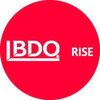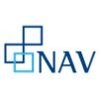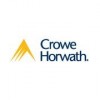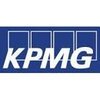Filter interviews by
Grant Thornton Bharat Associate Executive Interview Questions and Answers
Grant Thornton Bharat Associate Executive Interview Experiences
1 interview found
I applied via Company Website and was interviewed in Jul 2022. There was 1 interview round.
(1 Question)
- Q1. Asked for MATERIALITY AUDIT WORKING & PLANING
Interview Preparation Tips
read stabdard on auditing issued by icai
Top trending discussions






Interview questions from similar companies
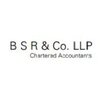
I applied via Referral and was interviewed in Jan 2024. There was 1 interview round.
(2 Questions)
- Q1. How to you perform analytics review of a financial statement ?
- Ans.
Performing analytics review of a financial statement involves analyzing key financial ratios, trends, and variances to assess the financial health of a company.
Start by calculating key financial ratios such as liquidity, profitability, and solvency ratios.
Compare the current financial statement with previous periods to identify trends and changes.
Analyze variances between actual and budgeted figures to understand the r...
- Q2. How to you identify opportunities for automation in the audit engagement
- Ans.
Identifying opportunities for automation in audit engagements involves analyzing repetitive tasks, manual processes, and areas with high risk of errors.
Analyze the audit process to identify repetitive tasks that can be automated, such as data entry or report generation
Look for manual processes that are time-consuming and prone to errors, such as reconciliations or data validation
Identify areas with high risk of errors,...
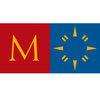
(1 Question)
- Q1. Basic details asked by hr
(1 Question)
- Q1. Junior partner takes interview and asked about process of GRC.
(1 Question)
- Q1. Sr. Partner in GRC takes the interview and asked about only your personal things as he didn't know about any GRC processing. You get easily hired if u know basic process of GRC.
Interview Preparation Tips
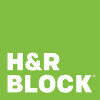
I applied via LinkedIn and was interviewed in Jul 2024. There was 1 interview round.
(3 Questions)
- Q1. How you got to know about us?
- Ans.
Through a job search website
Browsing job search websites
Saw job posting on LinkedIn
Referred by a friend who saw the job posting
- Q2. Tell something interesting about you
- Ans.
I have traveled to over 20 countries and can speak 4 languages fluently.
I love exploring new cultures and trying different cuisines
I have lived in Europe, Asia, and North America
I am fluent in English, Spanish, French, and Mandarin
Traveling has broadened my perspective and enriched my life experiences
- Q3. Apart from self intro say something interesting about you?
Interview Preparation Tips
and try to answer without fillers

I applied via Referral and was interviewed before Dec 2020. There were 5 interview rounds.
Interview Questionnaire
1 Question
- Q1. Technical questions on GST
Interview Preparation Tips

Assistant Manager Interview Questions & Answers
EY Global Delivery Services ( EY GDS)posted on 13 Jun 2022
I applied via Naukri.com and was interviewed before Jun 2021. There were 2 interview rounds.

(1 Question)
- Q1. Wherw do you see yourself in next 5 years
Interview Preparation Tips

Interview Questionnaire
1 Question
- Q1. Introduction

I applied via Company Website and was interviewed in May 2021. There were 4 interview rounds.
Interview Questionnaire
2 Questions
- Q1. Regarding tax
- Q2. Self intro
Interview Preparation Tips

Assistant Manager Interview Questions & Answers
EY Global Delivery Services ( EY GDS)posted on 19 Dec 2020
I applied via Referral and was interviewed before Dec 2019. There were 4 interview rounds.
Interview Questionnaire
1 Question
- Q1. Defeerred Expense & revenue
Interview Preparation Tips

Assistant Manager Interview Questions & Answers
EY Global Delivery Services ( EY GDS)posted on 4 Oct 2021
I appeared for an interview in Apr 2021.
Interview Questionnaire
1 Question
- Q1. All about dcf, they asked
Interview Preparation Tips
Grant Thornton Bharat Interview FAQs
Tell us how to improve this page.
Grant Thornton Bharat Interviews By Designations
- Grant Thornton Bharat Consultant Interview Questions
- Grant Thornton Bharat Senior Consultant Interview Questions
- Grant Thornton Bharat Management Trainee Interview Questions
- Grant Thornton Bharat Audit Associate Interview Questions
- Grant Thornton Bharat Senior Associate Interview Questions
- Grant Thornton Bharat Assistant Manager Interview Questions
- Grant Thornton Bharat Summer Intern Interview Questions
- Grant Thornton Bharat Associate Interview Questions
- Show more
Interview Questions for Popular Designations
- Associate Interview Questions
- Senior Associate Interview Questions
- Associate Software Engineer Interview Questions
- Associate Consultant Interview Questions
- Process Associate Interview Questions
- Associate Engineer Interview Questions
- Research Associate Interview Questions
- Business Development Associate Interview Questions
- Show more
Interview Questions from Similar Companies
Fast track your campus placements
Grant Thornton Bharat Associate Executive Reviews and Ratings
based on 1 review
Rating in categories
|
Consultant
320
salaries
| ₹4.5 L/yr - ₹18.5 L/yr |
|
Assistant Manager
158
salaries
| ₹7.2 L/yr - ₹23.3 L/yr |
|
Senior Consultant
126
salaries
| ₹6 L/yr - ₹15.6 L/yr |
|
Manager
80
salaries
| ₹15 L/yr - ₹33.5 L/yr |
|
Associate Director
48
salaries
| ₹28 L/yr - ₹43.9 L/yr |

EY Global Delivery Services ( EY GDS)

BDO India LLP

RSM India

Ryan
- Home >
- Interviews >
- Grant Thornton Bharat Interview Questions >
- Grant Thornton Bharat Associate Executive Interview Questions


